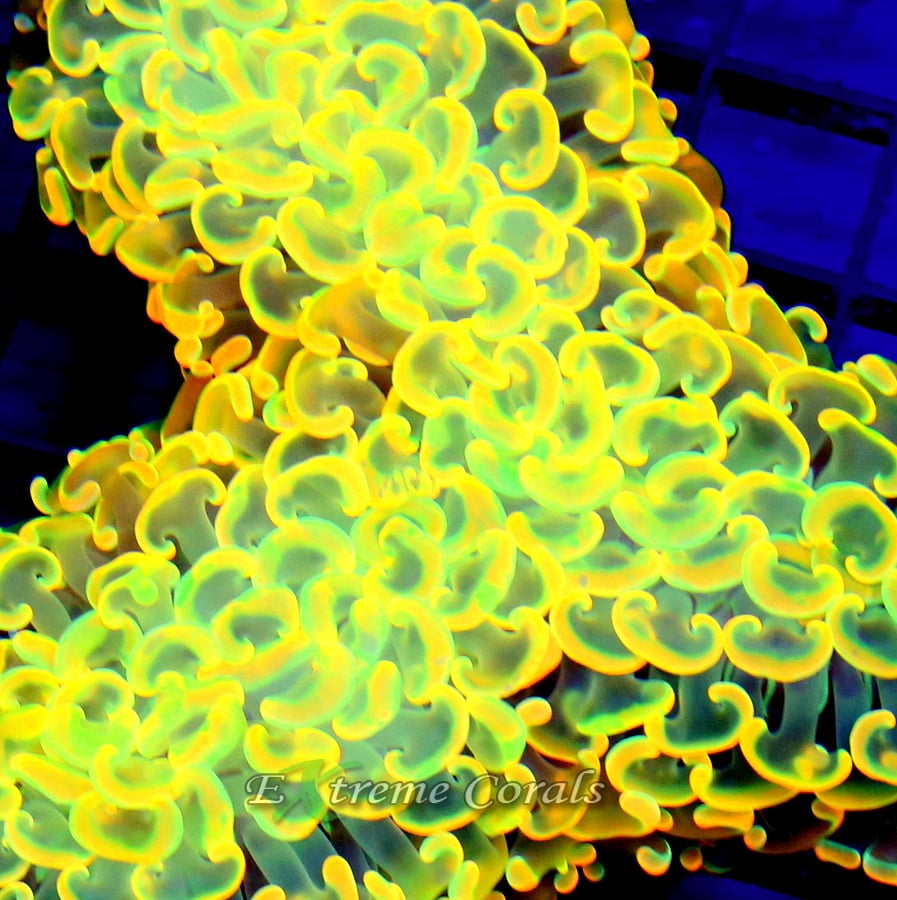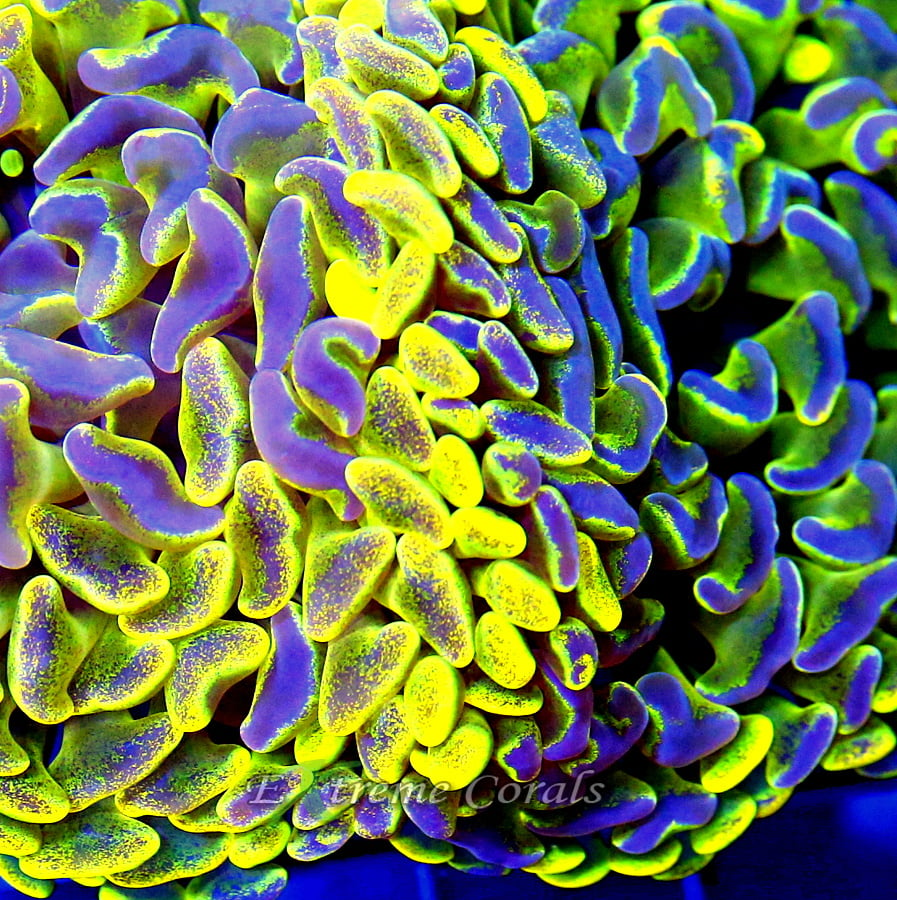Extreme Corals News and Updates
The Ultimate Guide to Keeping Hammer Corals: Tips for Thriving Reefs
Mastering the Art of Hammer Coral Care: A Comprehensive Guide for Reef Enthusiasts
Discover essential tips for keeping hammer corals thriving in your reef tank. Learn about setup, feeding, maintenance, and more for vibrant and healthy corals
by scott Shiles • March 25, 2024
Introduction to Hammer Corals

Hammer corals, also known as Euphyllia, are a popular LPS (Large Polyp Stony) reef-building coral species known for their striking hammer-like appearance. These corals feature long tentacles that sway with the water, adding a mesmerizing beauty to any reef tank. Hammer corals are relatively hardy and can adapt well to varying tank conditions, making them a great choice for both beginner and experienced reef enthusiasts. These corals come in various color variations, including vibrant greens, pinks, and browns, adding a pop of color to your underwater ecosystem.
Benefits of Keeping Hammer Corals in Reef Tanks
Hammer corals add vibrant color and movement to your reef tank, creating a mesmerizing underwater world. These corals are known for their hardiness and ability to thrive in various tank conditions. They can grow and propagate easily, making them a great choice for both beginner and experienced hobbyists. Additionally, hammer corals have stunning tentacles that sway gracefully in the water, adding a dynamic element to your tank's landscape.
Setting Up the Ideal Environment for Hammer Corals
To give your hammer corals the best chance to thrive, you need to create an environment that mimics their natural habitat. Here are some key tips to set up the ideal environment for hammer corals:
Place them in a well-lit area with moderate water flow
Ensure stable water parameters, including temperature, pH, and salinity
Provide ample space between corals to prevent overcrowding
Use high-quality salt mix for the aquarium water
Regularly test and maintain proper calcium, alkalinity, and magnesium levels for coral health
Water Quality and Lighting Requirements
Proper water quality is crucial for hammer corals to thrive. Maintain stable parameters in your reef tank, including temperature, salinity, and pH levels. Regularly test the water to ensure it meets the ideal conditions for these corals.
Hammer corals require moderate to high lighting levels to support their growth and coloration. Use LED lights specifically designed for reef tanks to provide the necessary intensity and spectrum. Position the lights at an appropriate distance from the corals to prevent bleaching or damage.
Feeding Tips for Hammer Corals
Hammer corals are generally easy to feed as they capture small particles from the water. However, to ensure their health and vibrancy, it's beneficial to offer them occasional feedings of phytoplankton, zooplankton, or mysis shrimp. Feeding them once or twice a week can enhance their growth and coloration. It's important not to overfeed, as this can negatively impact water quality. Maintaining a balanced diet will keep your hammer corals healthy and thriving in your reef tank.
Common Issues and Troubleshooting
If you notice that your hammer coral is not opening fully, it may be due to insufficient light or water flow. Check that the coral is placed in an area with moderate to high light levels and gentle water movement. Additionally, ensure that water parameters such as temperature, salinity, and pH are within the optimal range for coral health. Stress can also cause hammer corals to retract their tentacles, so avoid sudden changes in water conditions. If you observe any signs of discoloration, tissue recession, or pests on the coral, it might indicate a more serious problem. In such cases, consider quarantining the coral and seeking advice from experienced reef keepers or marine biologists.
Fragging and Propagation Techniques
Hammer corals can be propagated through fragging, which involves cutting a piece of the coral and attaching it to a new surface where it can grow. Here are some techniques for fragging and propagating hammer corals:
Select a healthy coral colony for fragging to ensure successful propagation.
Use sharp scissors or coral cutters to gently cut a piece of the coral, making sure to avoid damaging the coral tissue.
Secure the fragged piece onto a new surface, such as a frag plug or a rock, using specialized reef glue or putty.
Provide the fragged coral with optimal lighting, water flow, and water quality to promote its growth and health.
Compatibility with Other Marine Life
Hammer corals can peacefully coexist with various marine life, including clownfish, gobies, and damselfish. These corals are known to get along well with other non-aggressive species. It is important to ensure that the tank mates you choose are not known to nip at corals, as this could harm the hammer coral. Avoid aggressive fish like triggers and puffers as they may damage the coral. Maintaining a harmonious tank environment is key to the well-being of your hammer coral and its tank mates.
Maintenance and Cleaning Practices
To keep your hammer corals thriving, it's essential to maintain good cleaning practices. Regularly clean your coral's surface gently to remove any buildup of algae or debris. Perform water changes to maintain water quality and ensure your corals have a healthy environment to thrive in. Check and adjust lighting to make sure your corals are receiving the right amount of light for growth. Monitor water parameters such as temperature, salinity, and pH levels to keep your hammer corals happy and healthy.
Ensuring the Health and Success of Your Hammer Corals
When it comes to keeping your hammer corals healthy and thriving, there are a few key factors to keep in mind.
Water Quality: Maintaining high water quality is crucial for the health of your hammer corals. Regular water testing and proper filtration are essential to ensure that the water parameters are within the optimal range.
Lighting: Hammer corals require moderate to high lighting levels to thrive. Make sure to provide them with the right amount of light for optimal growth and coloration.
Feeding: While hammer corals can get some of their nutrients from the water, they will benefit from supplemental feeding. Offer them a variety of small meaty foods like brine shrimp or mysis shrimp to help them grow and stay healthy.
By paying attention to these factors and providing proper care, you can enjoy a beautiful and successful reef tank filled with thriving hammer corals.

